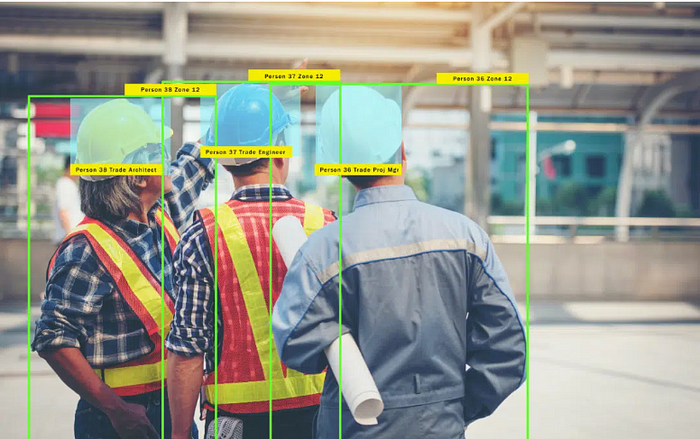Safer Workplaces: Ensuring PPE Compliance with Computer Vision
Safety is of paramount concern for both employees and employers at any workplace, and the wearing of Personal Protective Equipment (PPE) like helmets, gloves, masks, vests, etc., by workers is a cornerstone of workplace safety. However, it’s common for workers to ignore safety standards, and manually monitoring their compliance is an arduous task for the monitoring personnel. In this article, we’ll explore how computer vision can be used to create safer workplaces by ensuring PPE compliance and detecting any violations in real-time.

Ensuring that employees consistently wear the required PPE is essential for several reasons. These include the following:
- Minimizing the risk of injury and workplace accidents.
- Safeguarding workers from long-term health issues caused by exposure to harmful substances or environments, such as respiratory problems or skin conditions.
- Legal and financial consequences for employers, including fines and compensation claims for non-compliance.
So What Goes Into It?
By employing cameras and trained machine learning models, it’s possible to detect PPE worn by the workers in real-time. By smartly placing the required number of cameras around a place, PPE items such as gloves, helmets, masks, etc., can be identified with high accuracy, even in complex environments. Automating the process also reduces the potential for human oversight and error. Finally, when any violations are detected, the system can trigger alerts, notifying both the worker and supervisors, allowing for immediate corrective action.
Let’s identify some key steps that go into building such an application:
- Gathering a diverse dataset of images or using an open-source dataset which has varied samples of PPE
- Training the detection or a classification model to recognize PPE items
- Deploying the trained model to monitor workplaces continuously using cameras and embedded ML devices
- Generating alerts and notifying the relevant personnel when violations are detected
- Continuously improving the model’s accuracy by feeding it new data and refining its algorithms.
Which Industries Will Benefit?
The applications of computer vision for PPE compliance extend across various industries. These include manufacturing, construction, healthcare, mining, laboratories, or basically any place where workers have to deal with hazardous substances or situations and are prone to accidents.
Safer workplaces are not just a regulatory requirement; they represent a commitment to the well-being of employees. By harnessing computer vision to enforce PPE compliance, we are taking a significant step toward minimizing workplace accidents, protecting workers’ health, and creating a safer and more productive work environment for all.
Feel free to connect with me to ask more about this or other ongoing projects, or to share your own ideas!
